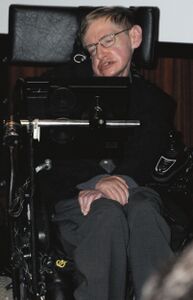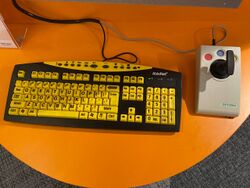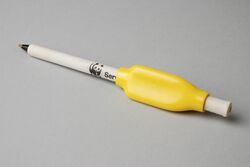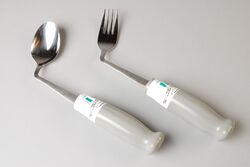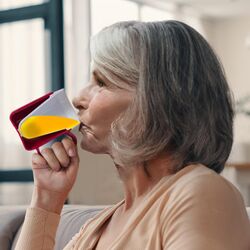Technological Aids for Self-Care and Environmental Adaptations: Difference between revisions
No edit summary |
No edit summary |
||
| Line 16: | Line 16: | ||
According to a recent study, self-care is defined as "the ability to care for oneself through awareness, self-control, and self-reliance to achieve, maintain, or promote optimal health and well-being.<nowiki>''</nowiki> But the definition evolves over time and may be relative to the person to whom it may be defined. It may differ from person to person and condition to condition. For example, some people may need to spend more time on self-care and engage their caregiver, but others may need less.<ref name=":1">Martinez N, Connelly C, Perez A, Calero P. [https://www.ncbi.nlm.nih.gov/pmc/articles/PMC8488814/pdf/main.pdf Self-care: A concept analysis. International Journal of Nursing Sciences]. 2021 Oct 10;8(4):418–25.</ref> | According to a recent study, self-care is defined as "the ability to care for oneself through awareness, self-control, and self-reliance to achieve, maintain, or promote optimal health and well-being.<nowiki>''</nowiki> But the definition evolves over time and may be relative to the person to whom it may be defined. It may differ from person to person and condition to condition. For example, some people may need to spend more time on self-care and engage their caregiver, but others may need less.<ref name=":1">Martinez N, Connelly C, Perez A, Calero P. [https://www.ncbi.nlm.nih.gov/pmc/articles/PMC8488814/pdf/main.pdf Self-care: A concept analysis. International Journal of Nursing Sciences]. 2021 Oct 10;8(4):418–25.</ref> | ||
== Examples of Self Care Activities == | == Examples of Self Care Activities and Assistive Technologies == | ||
Assistive technology for activities of daily living are variety of products, devices, and equipment used in everyday functional activities by the person with disabilities or the elderly. Potential activities of daily living which can be make more easier, safer and quicker with support from assistive technologies may be categories, but are not only included to, | Assistive technology for activities of daily living are variety of products, devices, and equipment used in everyday functional activities by the person with disabilities or the elderly. Potential activities of daily living which can be make more easier, safer and quicker with support from assistive technologies may be categories, but are not only included to, | ||
| Line 36: | Line 36: | ||
* school and work activities. | * school and work activities. | ||
The example may described simply by reachers, modified utensils, printing with large size fonts, etc. Such technologies should both, environment and person friendly to adapt the environment to support identified needs, choice, and control.<ref>Hammel J. [https://www.britannica.com/topic/aids-for-activities-of-daily-living Aids for activities of daily living.] Encyclopedia Britannica. 2023.</ref> | The example may described simply by reachers, modified utensils, printing with large size fonts, etc. Such technologies should both, environment and person friendly to adapt the environment to support identified needs, choice, and control.<ref name=":0">Hammel J. [https://www.britannica.com/topic/aids-for-activities-of-daily-living Aids for activities of daily living.] Encyclopedia Britannica. 2023.</ref> | ||
Some pictures of assistive technologies for self care added below for better understanding of the concept, | Some pictures of assistive technologies for self care added below for better understanding of the concept, | ||
| Line 45: | Line 45: | ||
File:Modified utensil.jpg|''Modified utensil'' | File:Modified utensil.jpg|''Modified utensil'' | ||
File:Thermo Mug.jpg|''Mug with angles on lower side to have drinks by less tilt'' | File:Thermo Mug.jpg|''Mug with angles on lower side to have drinks by less tilt'' | ||
</gallery> | </gallery>With the universal design movement have revolutionary impact on assistive technologies for self care. Now a days the customized assistive devices available in local departmental stores and online stores. It helps to maintaining, increasing and delay in declining the everyday functions of a person with disabilities. <ref name=":0" /> | ||
Talking clocks may helps to the person with dementia and person with visual impairment to do their daily activities timely. A medication dispenser with alarm may help to take medication on time for person with dementia. Large variety of mobile app also helping person with with visual impairment by providing visual cues and screen reader facilities.<ref name=":0" /><br>For improve the functional independence at bathroom assistive technologies play pivotal role. The common types of assistive technologies at bathroom are grab bar or hand rail, toilet arm support, height adjustable toilet, shower stall, bath seat, bath transfer bench, etc. The home adaptation should be consider during the planning process of building a home to integrate the assistive technologies to improve the self care. <ref>De-Rosende-Celeiro I, Torres G, Seoane-Bouzas M, Ávila A. [https://www.ncbi.nlm.nih.gov/pmc/articles/PMC6453482/ Exploring the use of assistive products to promote functional independence in self-care activities in the bathroom.] Moody EJ, editor. PLoS ONE [Internet]. 2019 Apr 8;14(4).</ref> | |||
== Cost Barriers == | == Cost Barriers == | ||
[[File: Money Bag.png|right|frameless]] | [[File: Money Bag.png|right|frameless]]Access to assistive technologies have lots of challenges and barriers. Among them the expenses considered as one of the primary barrier. Although the need is growing day by day for self-care and environmental products the cost affordability is not available for every places equally. Still a large number of people with disabilities unable to have them. No social financing system in place for the purchasing self care related assistive technologies. Few developed countries started to implementing some initiatives. For example, the United States, a national network of alternative financing programs offers a consumer-directed program and a range of alternative financing strategies to increase access to funding for these products and other technologies; Canada and Sweden have implemented delivery systems that offer more extensive access to these products as part of integrated community living plans.<ref name=":0" /> | ||
== References == | == References == | ||
<references /> | <references /> | ||
Revision as of 19:11, 21 February 2024
Original Editors - Lucinda hampton
Top Contributors - Lucinda hampton, Mahbubur Rahman, Naomi O'Reilly, Kim Jackson and Ewa Jaraczewska
Introduction[edit | edit source]
Steven Hawking was a valuable role model for technological solutions for those with disabilities. With his recognizable wheelchair and computer-generated voice, he demonstrated the value of technological solutions. For Example, liberating the voice of those with physical and communication disabilities.
Assistive technologies facilitate mobility and other functional abilities, like eating, seeing, hearing, etc. It includes the basic things to advance devices. From utensils with large handles to speech-generating devices, all are forms of assistive technology. It reduced and diminished the disparities between people with different abilities.[1]
What is Self Care?[edit | edit source]
According to a recent study, self-care is defined as "the ability to care for oneself through awareness, self-control, and self-reliance to achieve, maintain, or promote optimal health and well-being.'' But the definition evolves over time and may be relative to the person to whom it may be defined. It may differ from person to person and condition to condition. For example, some people may need to spend more time on self-care and engage their caregiver, but others may need less.[2]
Examples of Self Care Activities and Assistive Technologies[edit | edit source]
Assistive technology for activities of daily living are variety of products, devices, and equipment used in everyday functional activities by the person with disabilities or the elderly. Potential activities of daily living which can be make more easier, safer and quicker with support from assistive technologies may be categories, but are not only included to,
- eating,
- cooking,
- grooming,
- bathing and showering,
- dressing,
- transferring to and from beds, vehicles, or wheelchairs,
- writing and basic communication,
- environmental control,
- home management,
- time management,
- organization and scheduling,
- money management,
- shopping,
- leisure/recreation/play,
- community living, and
- school and work activities.
The example may described simply by reachers, modified utensils, printing with large size fonts, etc. Such technologies should both, environment and person friendly to adapt the environment to support identified needs, choice, and control.[3]
Some pictures of assistive technologies for self care added below for better understanding of the concept,
With the universal design movement have revolutionary impact on assistive technologies for self care. Now a days the customized assistive devices available in local departmental stores and online stores. It helps to maintaining, increasing and delay in declining the everyday functions of a person with disabilities. [3]
Talking clocks may helps to the person with dementia and person with visual impairment to do their daily activities timely. A medication dispenser with alarm may help to take medication on time for person with dementia. Large variety of mobile app also helping person with with visual impairment by providing visual cues and screen reader facilities.[3]
For improve the functional independence at bathroom assistive technologies play pivotal role. The common types of assistive technologies at bathroom are grab bar or hand rail, toilet arm support, height adjustable toilet, shower stall, bath seat, bath transfer bench, etc. The home adaptation should be consider during the planning process of building a home to integrate the assistive technologies to improve the self care. [4]
Cost Barriers[edit | edit source]
Access to assistive technologies have lots of challenges and barriers. Among them the expenses considered as one of the primary barrier. Although the need is growing day by day for self-care and environmental products the cost affordability is not available for every places equally. Still a large number of people with disabilities unable to have them. No social financing system in place for the purchasing self care related assistive technologies. Few developed countries started to implementing some initiatives. For example, the United States, a national network of alternative financing programs offers a consumer-directed program and a range of alternative financing strategies to increase access to funding for these products and other technologies; Canada and Sweden have implemented delivery systems that offer more extensive access to these products as part of integrated community living plans.[3]
References [edit | edit source]
- ↑ Blair ME. Stephen Hawking as an accidental ambassador for assistive technologies. The Conversation. 2018 [cited 2024 Feb 18].
- ↑ Martinez N, Connelly C, Perez A, Calero P. Self-care: A concept analysis. International Journal of Nursing Sciences. 2021 Oct 10;8(4):418–25.
- ↑ 3.0 3.1 3.2 3.3 Hammel J. Aids for activities of daily living. Encyclopedia Britannica. 2023.
- ↑ De-Rosende-Celeiro I, Torres G, Seoane-Bouzas M, Ávila A. Exploring the use of assistive products to promote functional independence in self-care activities in the bathroom. Moody EJ, editor. PLoS ONE [Internet]. 2019 Apr 8;14(4).
